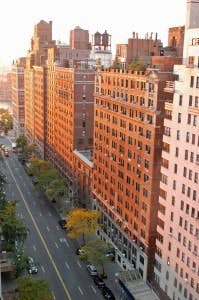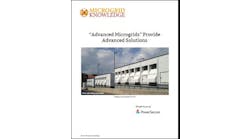Credit: Roy Googin
Philip Henderson, of the Natural Resources Defense Council, details Fannie Mae’s innovation in energy efficiency lending for apartment buildings.
Some people might be surprised to learn that Fannie Mae — a company that purchases mortgage loans and sells mortgage-backed securities — is an innovator in energy efficiency. Its new policy to offer a discount on loans for more efficient apartment buildings deserves our recognition and applause.
One should not be surprised by this. Fannie Mae is focused on energy and water efficiency for good reasons — efficiency is an important factor in the housing market, as evidenced by growing numbers of houses and apartment buildings with certifications such as ENERGY STAR, LEED, and Enterprise’s Green Communities standards.
These trends are confirmed in market reports. It’s especially important for residents of affordable housing who can least afford the high cost of wasted energy and water.Fannie Mae’s multifamily team has (once again) shown leadership by implementing this new policy.
There is, however, an interesting surprise in Fannie Mae’s new policy.
First things first: What’s the new policy?
Fannie Mae’s multifamily loans will now offer a discount 10 basis points off of finance charges on loans secured by apartment buildings with certified efficiency standards. (Here is Fannie Mae’s recently-released Fact Sheet).
- What properties are eligible for the discount? Multifamily rental properties (5 or more units) that are otherwise eligible for a purchase or refinance loan and certified by a recognized standard (ENERGY STARtm, USGBC LEED, or Enterprise’s Green Communities). If the property is subsidized affordable housing, the properties could also obtain the 10 basis point discount on loans to make efficiency-related repairs and improvements using Fannie Mae’s Green Preservation or M-PIRE loans.
- What is 10 basis points in real money? Fannie Mae offers this example: If the market interest rate is 4 percent on a multifamily loan, the rate with the new discount would be 3.9 percent. On a $10 million loan, with a 30-year amortization, the owner would save $95,000 in interest payments over a 10-year term.
Why this discount makes a ton of sense: better loan quality
If the owner pays a large utility bill directly (such as in a property with a central boiler or central cooling system), a more efficient property will mean lower operating expenses for the owner. This is a fundamental driver of loan quality. Even if residents pay utility bills for their own meters (such as in a property with heating and cooling systems in each separately-metered apartment), it is reasonable to expect lower utility expenses to translate into higher rent to the owner, over time, or better occupancy rates (or both). Again, these are fundamental drivers of loan quality for multifamily mortgage loans.
Lower utility expenses are likely to mean higher property values for energy-efficient buildings. This is perhaps the most important consideration for a lender or investor.Some economists argue that maintaining property value during the life of the loan is the most important determinant of mortgage performance because default is unlikely if a property can be sold for more than the loan amount.
To some extent, simple correlation could also be at work. Some energy-efficient properties might be newer or in better locations than comparable, non-certified properties. Properties that obtain a “green certification” might command higher rents for reasons other than lower utility expenses. And, owners that make efficiency-related repairs using a Green Preservation loan, for example, might be doing work that is preventive maintenance.
Fannie Mae’s discount is backed by experience and results of loans in the Fannie Mae portfolio and by prior studies (see results cited here and here). Even with a sound basis for the policy, one of the important values of the new discount will be more loans on more efficient properties, which should enable analysis and greater certainty as to exactly how utility expenses factor into loan fundamentals. This data then will allow a process of continual improvement and refinement of the loan terms and features.
It’s good news for many
For all these reasons, Fannie Mae deserves to be commended. It’s policy is likely to encourage apartment building owners to invest to make properties more efficient. In so doing, Fannie Mae’s new loan features will deliver many benefits:
- Better loans will deliver value to Fannie Mae, its investors, and its owners (that’sus!).
- Residents of more efficient apartment buildings will have lower utility expenses. This is especially important for residents of affordable or low-income housing.
- Utilities and their customers will benefit from greater energy efficiency.
- Polluting power plants will pollute less by not making the electricity that would be wasted in less efficient buildings.
The surprise and open question
Fannie Mae’s business is roughly 80 percent single-family houses and 20 percent multifamily apartments. In 2014, Fannie Mae financed 1,824,000 home purchases and refinances, as compared to 446,000 units in multifamily buildings (see 2014 annual results).
Why is the efficiency innovation limited to multifamily loans? High efficiency houses are a rapidly growing segment of the market – some estimate that 30 percent of new houses will be Energy Star-certified by 2016. What is Fannie Mae doing in its single-family business to account for this important trend?
Philip Henderson is an NRDC senior financial policy specialist in Washington, DC. This blog originally appeared in NRDC’s Switchboard.







